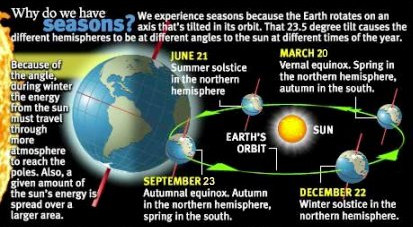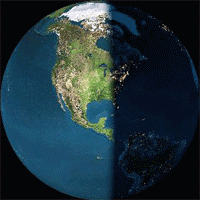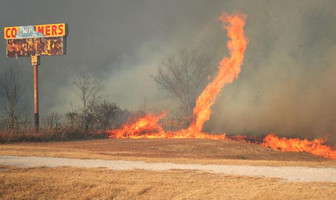
With the effects of La Nina still in full force the globe’s temperatures performed as forecasted during April 2011. According to NOAA the month ranked as the seventh warmest April on record while Denver saw warmer and drier than normal conditions as well.
Denver saw an average temperature during the month of 48.4 degrees – 0.8 degree above normal. Temperatures ranged from a record high of 84 degrees on the 2nd down to a low of 19 on the 4th of the month. Fifteen days saw temperatures dip below the freezing mark which is four more than normal.
Here in Thornton we were slightly cooler with an average of 48.1 degrees for April. Our high ranged from 86.3 degrees down to a low of 20.6 degrees.
The lack of precipitation and snowfall was one of the biggest stories of the month for the Mile High City. A mere 1.07 inch of precipitation was recorded in Denver’s rain bucket which was 0.86 inch below the normal of 1.93 inches.
Snowfall was similarly dismal as only 1.2 inches of snow was recorded at Denver International Airport. This was far below the normal of 9.1 inches for April which is historically our fourth snowiest month. Through April 30, a mere 21.8 inches of snow has been recorded at Denver’s official monitoring site at Denver International Airport – the second worst snow season to date.
Thornton was a bit wetter than Denver as we recorded 1.54 inches of liquid precipitation. In terms of snowfall we received only 1.5 inches, most of which (1.3”) fell on the 3rd of the month.
Overall the globe saw warm temperatures as well. The combined land and ocean temperature average for the month was 57.76° F which was 1.06° above the 20th century average. Taken separately the land surface temperature was 2.02° above normal and sea temperatures were 0.70° above normal.
April 2011 global climate summary – From NOAA:
The Earth experienced the seventh warmest April since record keeping began in 1880, as the climate phenomenon La Niña continued to be a significant factor. April’s annual Arctic sea ice extent was the fifth smallest since record keeping began in 1979, while the Antarctic sea ice extent was the fourth smallest.
The monthly analysis from NOAA’s National Climatic Data Center in Asheville, N.C., is part of the suite of climate services NOAA provides government, business and community leaders so they can make informed decisions.
Global Temperature Highlights – April
- The combined global land and ocean average surface temperature for April 2011 was the seventh warmest on record at 57.76 F (14.29 C), which is 1.06 F (0.59 C) above the 20th century average of 56.7 F (13.7 C). The margin of error associated with this temperature is +/- 0.13 F (0.07 C).
- Separately, the global land surface temperature was 2.02 F (1.12 C) above the 20th century average of 46.5 F (8.1 C), which was the sixth warmest April on record. The margin of error is +/- 0.20 F (0.11 C). Warmer-than-average conditions occurred across most of the southern United States and northern Mexico, much of central South America, Europe and Siberia. Cooler-than-average regions included most of Alaska, western Canada, the northwestern United States, southwestern Greenland and most of Australia.
- The April global ocean surface temperature was 0.70 F (0.39 C) above the 20th century average of 60.9 F (16.0 C), making it the 11th warmest April on record. The margin of error is +/- 0.07 F (0.04 C). The warmth was most pronounced in the eastern Atlantic Ocean, the northwestern Pacific and across the Southern Hemisphere mid-latitudes.
- The average temperature was the warmest on record for April across the United Kingdom. Germany reported its second warmest April since records began in 1881.
Global Temperature Highlights – Year-to-date
- The combined global land and ocean average surface temperature for the year to date (January – April 2011) was 0.86 F (0.48 C) above the 20th century average of 54.8 F (12.6 C), making it the 14th warmest on record. The margin of error is +/- 0.16 F (0.09 C).
- The year-to-date worldwide land surface temperature was 1.33 F (0.74 C) above the 20th century average — the 17th warmest such period on record. The margin of error is +/- 0.36 F (0.20 C). Warmer-than-average conditions were particularly felt across the southern half of Greenland, Siberia, northern Mexico, the southern United States and across Africa. Cooler-than-average regions included central Canada, the northern United States, western Russia, Kazakhstan, Mongolia, extreme southeast Asia and most of Australia.
- The global ocean surface temperature for the year-to-date was 0.68 F (0.38 C) above the 20th century average and was the 11th warmest such period on record. The margin of error is +/-0.07 F (0.04 C). The warmth was most pronounced across parts of the most of the western Pacific Ocean, the tropical Atlantic Ocean, the North Atlantic near Greenland and Canada, and the southern mid-latitude oceans.
- La Niña conditions continued to weaken in April for the fourth consecutive month, although sea-surface temperatures remained below normal across the central and eastern equatorial Pacific Ocean. According to NOAA’s Climate Prediction Center, La Niña will continue to have global impacts as the event continues to decline, but by late spring neither La Niña nor El Niño conditions are expected to prevail in the region.
- Effective May 2, 2011, NOAA updated its monthly mean temperature dataset, which is used to calculate global land surface temperature anomalies and trends. The Global Historical Climate Network-Monthly (GHCN-M) version 3 dataset replaced GHCN-M version 2. Beginning with this month’s Global State of the Climate Report, GHCN-M version 3 is used for National Climatic Data Center climate monitoring products. More information on this transition can be found at:http://www.ncdc.noaa.gov/ghcnm.
Polar Sea Ice and Precipitation Highlights
- The average Arctic sea ice extent during April was 5.7 percent below average, ranking as the fifth smallest April since satellite records began in 1979.
- The April 2011 Antarctic sea ice extent was 7.7 percent below average and was fourth lowest April extent since records began in 1979.
- Northern Hemisphere snow cover extent during April ranked as the 15th smallest on record, while the snow cover extent over North America was the 10th largest and Eurasian snow cover was the fifth smallest April snow cover on record.
- Average rainfall across Australia was 18 percent above average during April. However, for the first month since June 2010, below-average rainfall was reported in the states of Queensland, South Australia and New South Wales. This broke a streak of nine consecutive months with above-normal rainfall in those states.












.jpg)